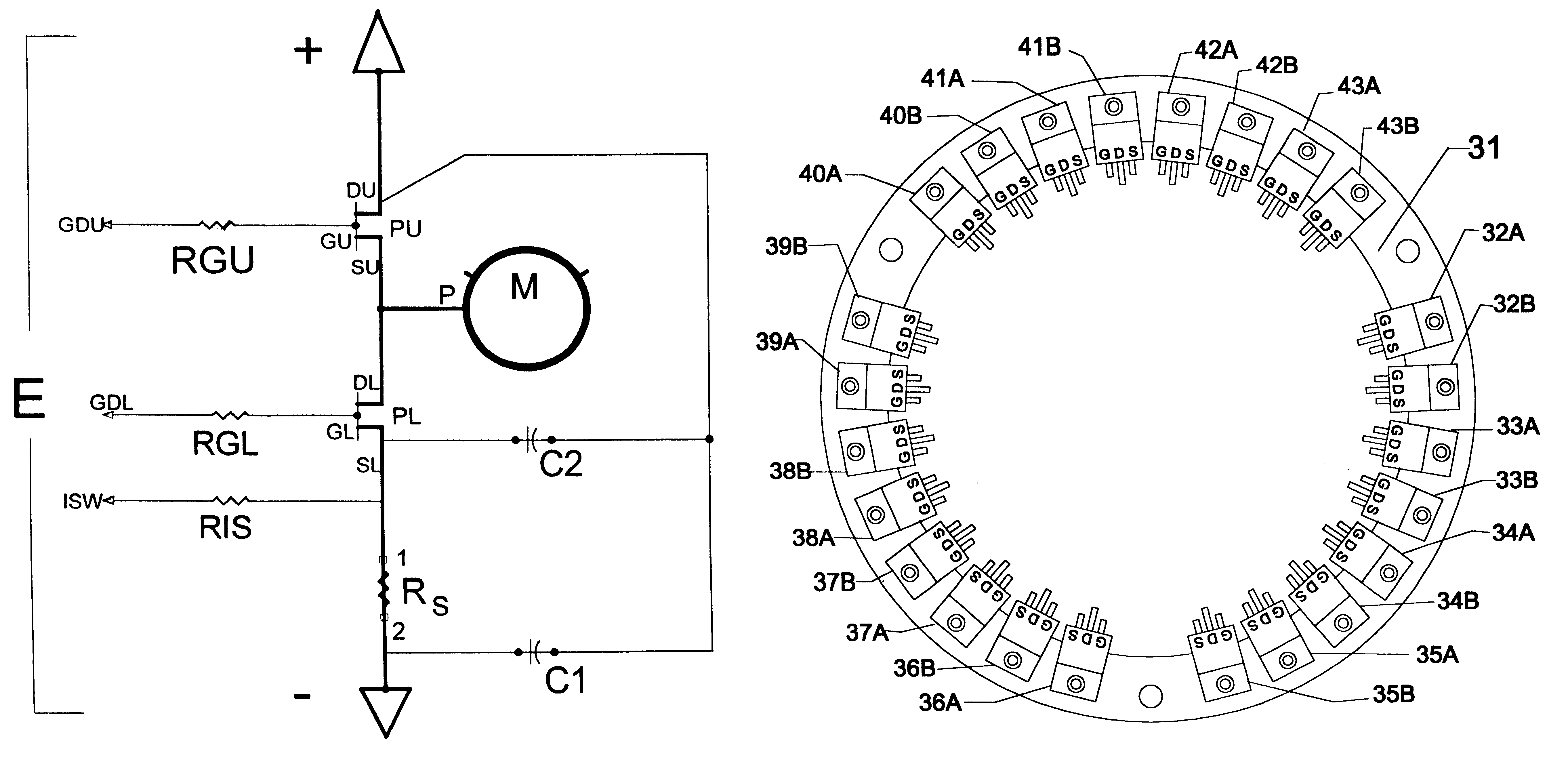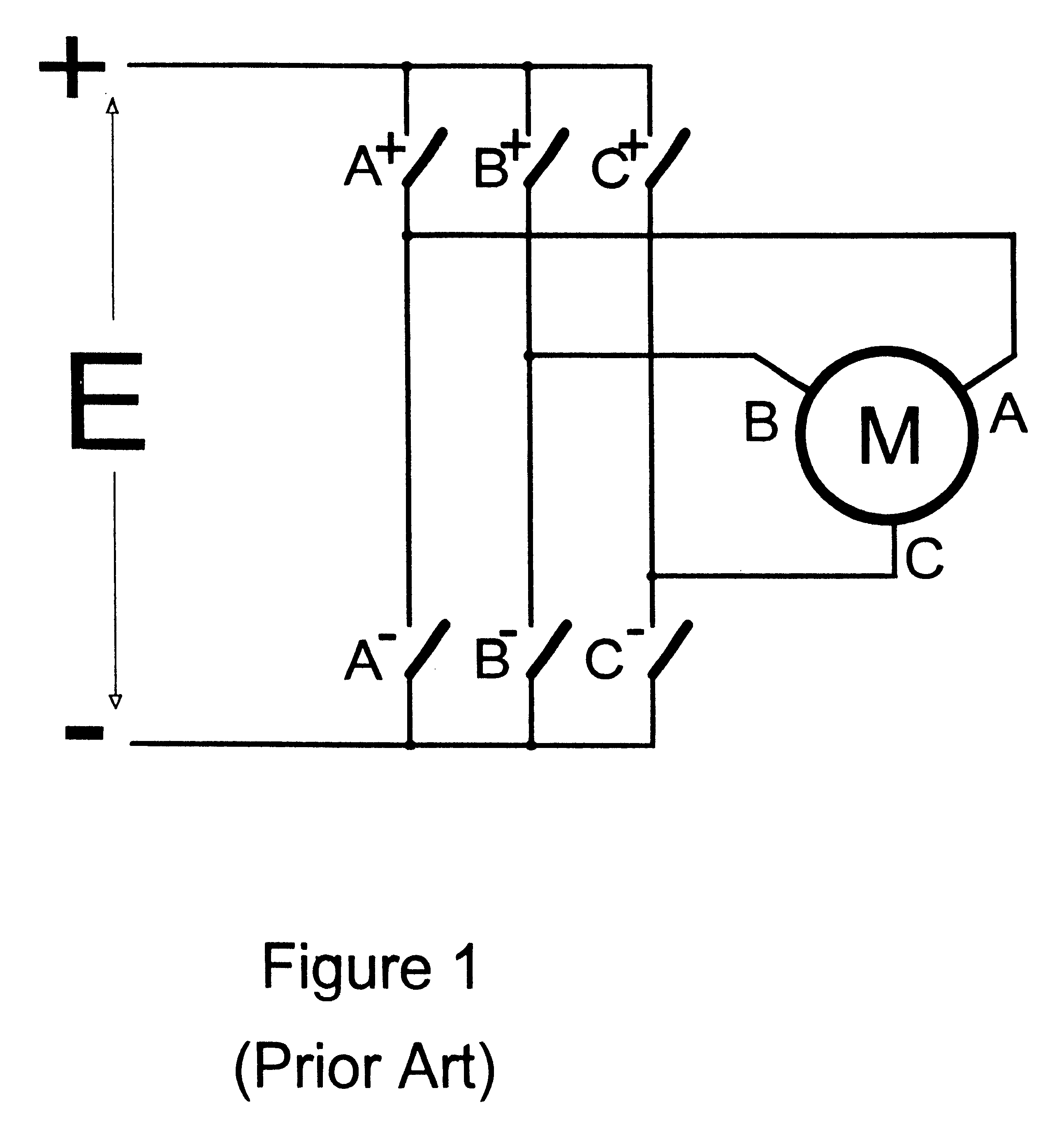Motor controller power switch arrangement
a technology for motor controllers and power switches, applied in the direction of motor/generator/converter stoppers, electronic commutators, dynamo-electric converter control, etc., can solve the problems of increased electrical inductance, increased physical space and electrical conductors, and other switching problems
- Summary
- Abstract
- Description
- Claims
- Application Information
AI Technical Summary
Benefits of technology
Problems solved by technology
Method used
Image
Examples
Embodiment Construction
General
The present invention is concerned primarily with advantages which accrue from preferred physical arrangements of the power circuits for an inverter. A secondary benefit allows for the measurement of the current and power in the various controlling electronic switches, and for the control by fine adjustment of these switches so as to achieve various optimizations.
An inverter is required whenever DC (direct current) is used as the power source to operate an AC (alternating current) motor. Modern inverters employ semiconductor power electronic switches, under various types of control, to accomplish this conversion.
The present invention revolves about the arrangement of the power semiconductors and circuits in such inverters, as well as the provision of signals to the control apparatus for optimally "fine tuning" the system to achieve certain performance enhancements.
Typical Power Circuitry
The power switching portion of a typical inverter is shown in FIG. 1. Here the (DC) power ...
PUM
 Login to View More
Login to View More Abstract
Description
Claims
Application Information
 Login to View More
Login to View More - R&D
- Intellectual Property
- Life Sciences
- Materials
- Tech Scout
- Unparalleled Data Quality
- Higher Quality Content
- 60% Fewer Hallucinations
Browse by: Latest US Patents, China's latest patents, Technical Efficacy Thesaurus, Application Domain, Technology Topic, Popular Technical Reports.
© 2025 PatSnap. All rights reserved.Legal|Privacy policy|Modern Slavery Act Transparency Statement|Sitemap|About US| Contact US: help@patsnap.com



